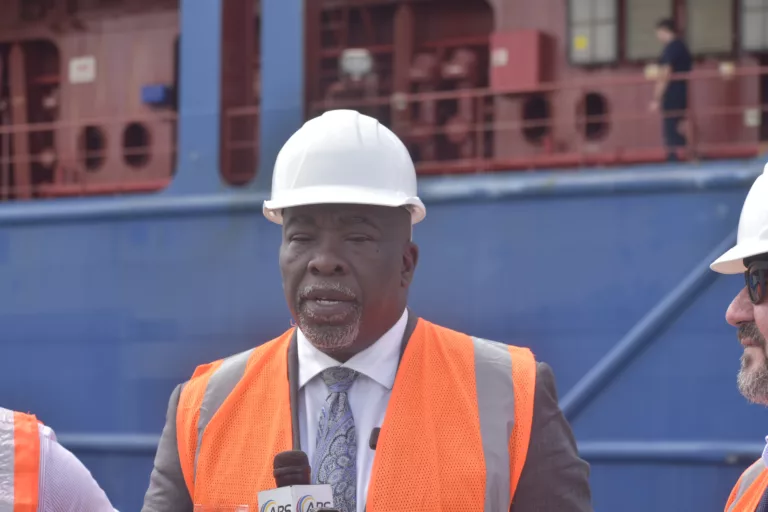(OBSERVER)As Antigua and Barbuda continues to divert its energy consumption away from heavy carbon- producing fuels, the Minister responsible for APUA and Public Utilities, Melford Nicholas, said that the arrival of four new LNG storage tanks could be a significant step.
Speaking at the Deep Water Harbour last week, the Minister said the government continues its push to reduce its climate impact through a transition to more alternative fuel sources.
“Most of our electricity generation has been based on heavy fuel oils and diesel, so we made a conscious decision that we are going to move away from that.
“The COP27 is coming up in Dubai later this year and our commitment is that, by 2028, eighty percent of our energy generation should come from renewable sources.
“LNG is a transitional fuel in that it is still carbon, but because of the reduced carbon emission, it still going to get us closer to that objective,” the Minister stated.
Four new 1000 cubic meter LNG storage tanks recently arrived on island as part of the effort by Caribbean LNG Ltd—a collaboration between Antigua Power Company and Eagle LNG—to build an LNG fuel terminal.
The storage tanks are to be transported to the Crabbs power plant over the next few days.
Minister Nicholas added that he will be exploring further alternative options to increase energy production.
“The best example of [a wind farm] would be Wigton energy farm in Jamaica, and I am due to travel later this year to have a look at that facility.
“We certainly have a test product now being done, driven by the work of the Department of the Environment…but that is where the opportunity is; I was in St Lucia a few weeks ago when we were looking at the possibility of wave and tidal energy to see whether or not there were any supporting technology for us,” the Minister explained.
However, the Minister noted that the shift away from carbon heavy fossil fuels for the country will require vast amounts of investment and time.
“We would expect that some point in time, there will be some stranded assets, meaning some of the old plants over the next eight years, even though they will be functional and operationally capable…the lifecycle of those assets would come to a premature end,” he added.










